احتمال خیلی زیاد بیشتر ما صد و اندی سال آینده رو نخواهیم دید؛ پس این آخرین و تنها باری بود که در طول زندگیمون می تونستیم شاهد این پدیده شگرف، این آیت بزرگ الاهی باشیم.... باید اعتراف کنم که با وجود برنامه ریزی های ذهنی قبلی و با وجود اشتیاق فراوون به دیدن این رخداد بزرگ، موفق نشدم در اون ساعت خاص نظاره گرش باشم.
و این پست یه جورایی غبطهای و افسوسی به چیزیه که از دستم رفته؛
عبور سیارهی عزیز زهره از مقابل خورشید گرم بهاری در صبحگاه هفدهم خرداد ماه، حوالی ساعت نه و نیم صبح، پدیده ای بود که ناکامهایی مثل من به احتمال زیاد صدواندی سال بعد دیگر نخواهند بود تا مشاهدش کنن. این پست تصاویری ویژه از این پدیده خاص و توضیحی تحلیلی-تاریخی از اون داره که دیدنش خالی از لطف نیست...
البته این پدیده در تهران خودمون هم توسط منجمان آماتوری کشور در سایت برج میلاد تهران رصد شد که در انتهای پست تصاویری گرفته شده توسط خانم بهبودی از این برنامه رو هم ضمیمه کردم.

une 6, 2012 - The Last Transit of our Lifetime
Something lovely happens in the skies today... Venus is a strangely errant planet, having the most complicated orbit when observed from Earth. We are lucky to observe this transit (basically the "Venus eclipse of the Sun") in our lifetime. The next one going to occur only in 2117. Here is the NASA image captured June 6, 2012 (SDO's Ultra-high Definition View of 2012 Venus Transit - 171 Angstrom):
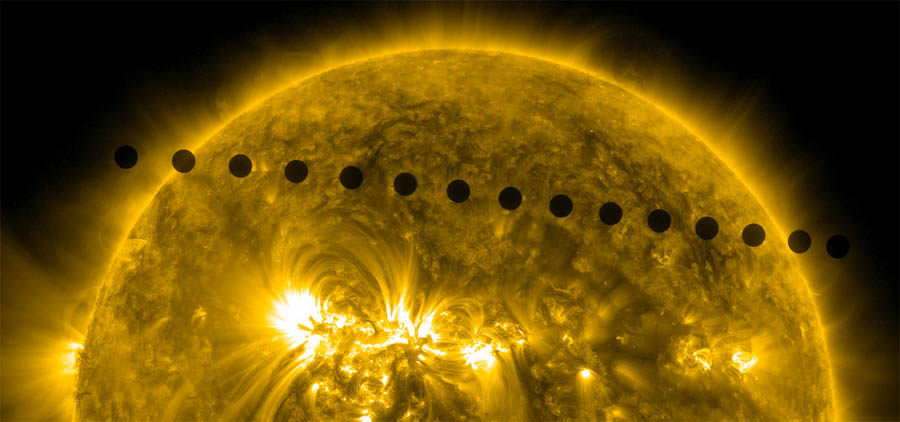
(images credit: NASA Goddard Photo and Video)
Gives you the proper sense of scale, doesn't it? Incredible detail revealed in this NASA/JAXA (Japanese space agency) spacecraft Hinode's photo:
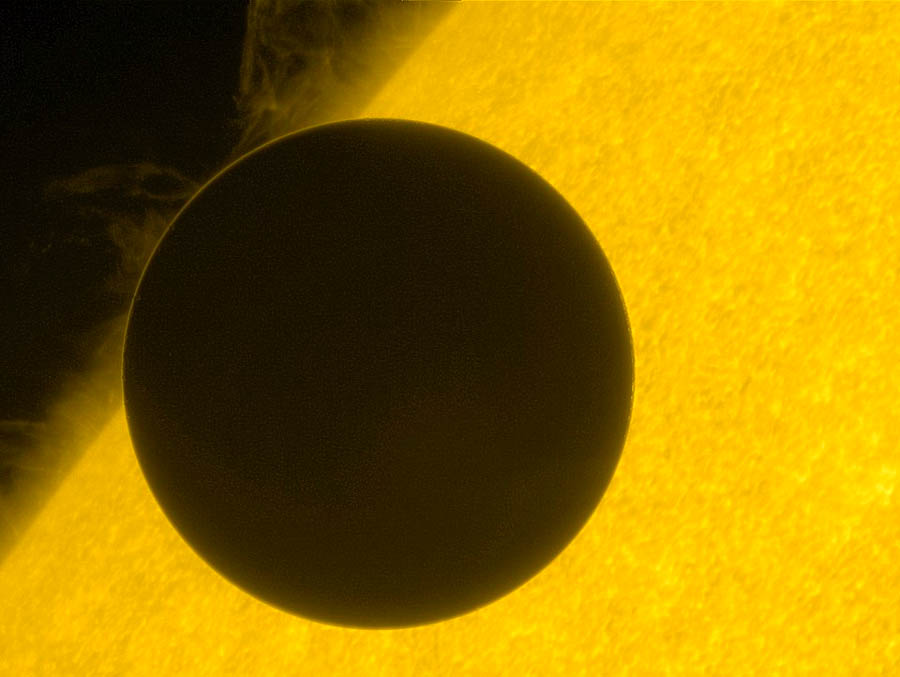

(images via)
"Transits of Venus are among the rarest of predictable astronomical phenomena. They occur in a pattern that repeats every 243 years. A transit is similar to a solar eclipse by the Moon. While the diameter of Venus is more than 3 times that of the Moon, Venus appears smaller, and travels more slowly across the face of the Sun, because it is much farther away from Earth."
This is how it was illustrated by Nitzschke (see quite large collection of historical Transit of Venus illustrations here):
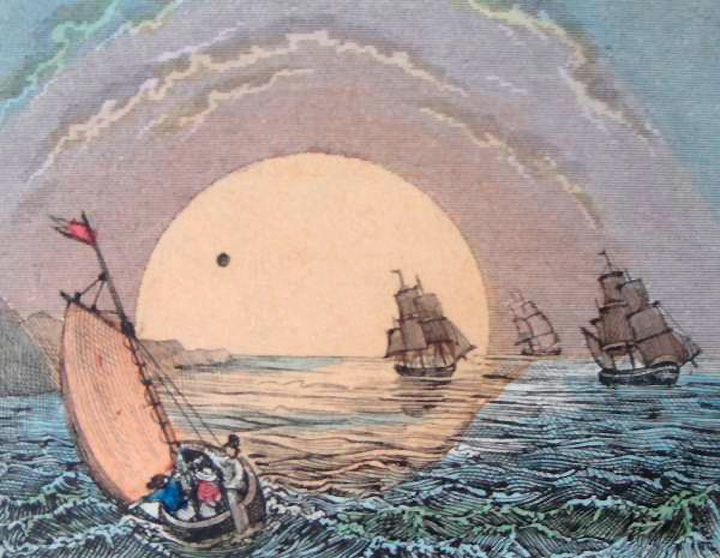
An glorious depiction of the Transit of Venus June 6th, 1761, conjoined Mercury, by Johann Gabriel Doppelmayr. First published in Atlas von hundert Charten 1712 & reprinted in Grossen Atlas 1716:

"Crabtree watching the Transit of Venus A.D. 1639" by Ford Madox Brown, a mural at Manchester Town Hall:
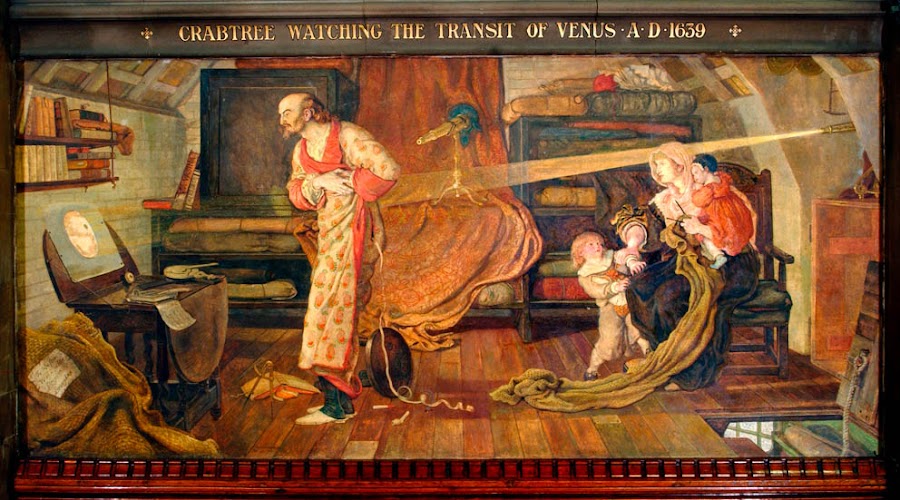
(image via)
Also check out this fabulous plate from observations in Guadalajara, Mexico, courtesy of Durruty Jesus de Alba Martinez:

(image via)
This year it will only visible in some parts of the globe, and in North America the transit has already occurred during sunset, June 5th... "Timing the transit from two widely separated places on the Earth’s surface allows you to work out the distance to Venus and hence the size of the solar system":

Planes seem to position themselves strategically over this unique event:
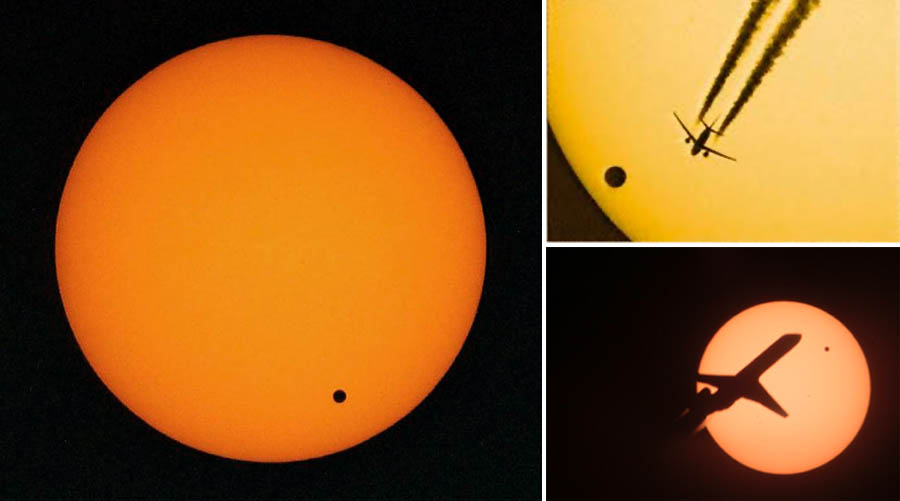
(images via)
"This event happens in pairs eight years apart that are separated from each other by 105 or 121 years. The last transit was in 2004 and the next will not happen until 2117." Here is a 2004 vs. 2012 passes comparison:
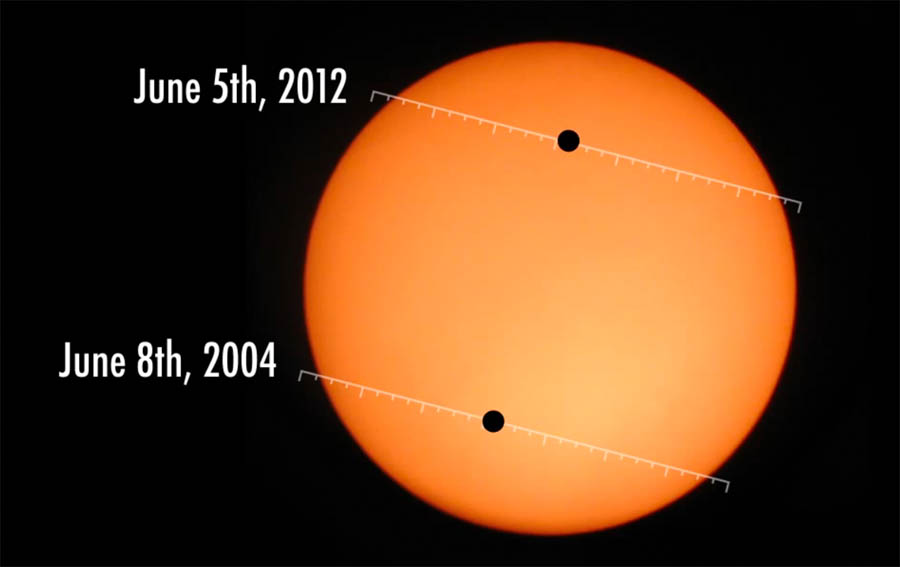
(image via)
Of course, you would need special solar filters to observe this event, and preferably, a telescope. However, I am sure that after-the-fact you can find plenty of images and videos on Google Images and Google Play, so don't worry if cloudy skies thwart your mission to see this today...
And to finish, here's another spectacular image: "Two Crescents", Venus and the Moon! -
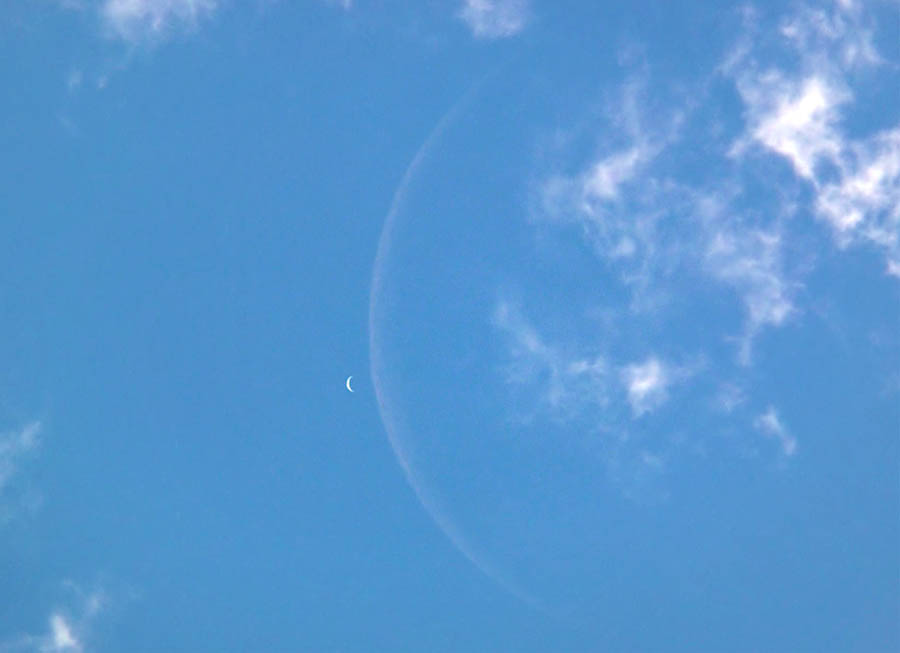
(image credit: Ivan Eder, via)
و اما رصد منجمان آماتوری کشور خودمون :
















عکس / فاطمه بهبودی





















